Embracing Wabi-Sabi: Imperfection and Rustic Rugs for Winter
Nothing can bring warmth and comfort to a home like the addition of rustic rugs, which can add a touch of the classic and whimsical to your interior décor. The concept of Wabi-Sabi embraces the flaws in winter rugs just like the irregularities we find in our everyday lives that we learn to accept. This concept teaches us that there is beauty in imperfections, and in this case, the faded colours and rustic look of worn winter rugs.

Wabi-Sabi is a Japanese concept that welcomes and celebrates beauty in all things, even when there are imperfections and incompleteness. Being authentic is a big part of the Wabi-Sabi mindset. This is where winter rugs' weathered and worn appearance is embraced for their rustic look rather than being thrown away. The good news is, when it comes to winter rugs, following Wabi-Sabi does not mean having to collect broken cups and plates that are glued together. On the contrary, there’s a certain classic style that can be found in older rugs which adds a sense of warmth to a living space.
Flatweave Winter Rugs
If you're searching for an inexpensive rug to fill a huge area or a high-traffic area, they are an excellent choice. A good flatweave rug will usually be less expensive than a high-quality rug with pile and be easier to maintain year after year. Compared to rugs with piles, flatweaves are easier to vacuum or clean with a wet cloth. They also hold less dirt. Some even lend themselves to machine washing, like cotton rag rugs. Most stains that do occur are removable.

Wool Rustic Rugs
Wool is a natural fabric that is often woven, tufted, knotted, or loomed by hand. Wool rugs that are machine-loomed do exist, although they are usually constructed of synthetic fibres rather than actual wool. Because so much effort goes into creating and designing genuine wool rugs, their cost is higher but their quality is superior. Wool carpets are a heritage investment as they are passed on. This kind of carpeting is perfect for high-traffic areas such as the foyer or living room because of its durability.
Adopting Wabi-sabi concepts in your house doesn't need you to be an authority on Japanese philosophy, or have a large budget. There isn't a "wrong" way to approach things; you just need to change your mindset from seeking perfection to valuing what you have.
More benefits will result from adopting Wabi-sabi than just a cosy house. It emphasizes being thankful for what we currently have as opposed to constantly wanting more and bringing about a strong change in viewpoint that makes us feel happy and at ease in the here and now. We may embrace peace and calm in our daily life thanks to wabi-sabi by falling in love with our flawed selves and The Rugs around us.

What Rustic Rugs for Living Room: Cosy Charm for Your Main Space
Rustic rugs can transform your living room into a warm, inviting retreat. Opt for natural fibres like jute or wool for an authentic rustic feel. Consider rugs with earthy tones such as browns, greens, and deep reds to complement wooden furniture. Textured weaves or subtle patterns inspired by nature can add depth to your space. Look for rugs with distressed designs or faded patterns to create a lived-in, comfortable atmosphere in your living room.

Rustic Rugs for Cabin: Enhancing Your Woodland Retreat
Choose rugs that enhance the cosy, natural ambiance of your cabin. Opt for wool or animal hide rugs for a truly rustic touch. Consider designs featuring woodland motifs like pine trees, bears, or deer for a thematic approach. Braided rugs in earth tones can add texture and warmth to wooden floors. Look for rugs with durable construction to withstand the wear and tear of cabin life while maintaining that rustic charm.
Rustic Area Rugs: Adding Warmth and Character to Any Space
Rustic area rugs can infuse any room with a sense of warmth and history. Look for rugs made from natural materials like wool, cotton, or jute for an authentic feel. Consider muted colour palettes with occasional pops of warm hues to create visual interest. Rugs with distressed patterns or faded designs can add a sense of age and character. Textured weaves or hand-knotted constructions can bring an artisanal touch to your rustic decor scheme.

Rustic Area Rugs 8x10: Statement Pieces for Larger Rooms
An 8x10 rustic area rug can serve as a stunning focal point in spacious rooms. Opt for designs with large-scale patterns inspired by nature or traditional crafts. Consider rugs with borders or central medallions for a more structured rustic look. Neutral base colours with subtle pattern details can provide versatility in your decor. Look for rugs with varied pile heights to add texture and interest to your floor space.
Rustic Rugs for Cabin: Creating a Cosy Woodland Atmosphere
Enhance your cabin's rustic appeal with carefully chosen rugs. Consider faux fur or sheepskin rugs for a touch of luxury and warmth. Rugs featuring Native American-inspired patterns can add cultural depth to your space. Look for durable, stain-resistant materials that can withstand outdoor elements often tracked into cabins. Layered rugs of different textures and sizes can create a cosy, lived-in feel perfect for cabin life.

Rustic Rugs for Bedroom: Comfort and Style for Your Personal Retreat
Create a serene rustic bedroom with the right rug choices. Opt for soft, plush materials like wool or high-pile synthetics for comfort underfoot. Consider muted, calming colours like soft greys, blues, or greens to promote relaxation. Rugs with subtle geometric patterns or abstract nature-inspired designs can add interest without overwhelming the space. Look for oversized rugs that extend beyond the bed for a luxurious feel.
Rustic Rugs for Living Room: Anchoring Your Main Living Space
Choose rustic rugs that tie together your living room's decor while adding warmth and character. Consider large area rugs with traditional patterns in muted colours to anchor your seating area. Look for rugs with distressed effects or faded designs to create a sense of history. Natural fibre rugs like jute or sisal can add texture and a casual, rustic vibe. Don't forget to consider durability for this high-traffic area of your home.

Rustic Rugs for Dining Room: Stylish Protection for Your Eating Area
Select rustic rugs that complement your dining room while offering practical benefits. Opt for flat-weave rugs or low-pile options to allow easy chair movement. Consider darker colours or patterns that can hide potential food stains. Rugs with borders or geometric designs can help define your dining area in open-plan spaces. Look for easy-to-clean materials that can withstand occasional spills and frequent vacuuming.
Rustic Rugs for Kitchen: Comfort and Style for Culinary Spaces
Bring rustic charm to your kitchen with carefully chosen rugs. Opt for durable, stain-resistant materials that can handle spills and heavy foot traffic. Consider runner rugs for galley kitchens or in front of sinks and stoves. Look for anti-fatigue properties to provide comfort during long cooking sessions. Rugs with fruit or vegetable motifs or farmhouse-inspired patterns can enhance your kitchen's rustic aesthetic.
Rustic Rugs for Bathroom: Cosy Touches for Your Washroom
Add rustic warmth to your bathroom with appropriate rug choices. Look for water-resistant materials or quick-drying fibres to prevent mould and mildew. Consider smaller accent rugs or bath mats with rustic designs for a subtle touch. Opt for textured rugs to provide grip on potentially slippery floors. Rugs with nature-inspired patterns or earthy tones can complement rustic bathroom decor beautifully.
Rustic Rug for Office: Warmth and Focus for Your Work Space
Create a productive yet cosy atmosphere in your office with a rustic rug. Consider durable, low-pile options that allow easy chair movement. Look for neutral colours with subtle patterns to add interest without distraction. Rugs with geometric designs or border details can help define your workspace in open areas. Don't forget to choose a size that accommodates your desk and chair comfortably.
Rustic Rug for Nursery: Soft and Safe for Little Ones
Bring rustic charm to your nursery with a rug that's both stylish and practical. Opt for soft, plush materials that are gentle on sensitive skin. Look for hypoallergenic and easy-to-clean options to maintain a healthy environment. Consider rugs with whimsical woodland themes or subtle nature-inspired patterns to complement rustic nursery decor. Choose non-toxic, child-safe materials to ensure your little one's safety.
Rustic Carpets for Living Room: Wall-to-Wall Comfort and Style

Transform your living room with wall-to-wall rustic carpeting. Consider textured loop pile carpets for durability and a natural look. Opt for warm, earthy tones or heathered designs to create a cosy atmosphere. Look for carpets with flecks of colour to add depth and hide potential stains. Don't forget to choose a high-quality underlay to enhance comfort and extend the life of your rustic carpet.
FAQ
How do you make a rug look vintage?
To make a rug look vintage, distress it naturally by placing it in high-traffic areas. You can also tea-stain it for an aged appearance or sun-fade it outdoors. Trimming the fringes unevenly can add to the vintage look.
What is a rustic rug?
A rustic rug features natural materials and earthy tones. It often has a rough texture and simple patterns that evoke a countryside or cabin feel. Jute, sisal, and wool are common materials used in rustic rugs.
What is the coarse material used for rugs?
Sisal and jute are popular coarse materials used for rugs. These natural fibers provide durability and a textured appearance. Coir, made from coconut husks, is another coarse option for rugs.
What makes a rug antique?
A rug is considered antique when it's at least 100 years old. Antique rugs often feature traditional designs, natural dyes, and hand-knotted construction. The quality of materials and craftsmanship also contribute to a rug's antique status.
Why do Turkish rugs look faded?
Turkish rugs often look faded due to natural aging processes. The use of vegetable dyes, exposure to sunlight, and years of use contribute to their faded appearance. This patina is often highly valued in authentic Turkish rugs.
How to fade a Turkish rug?
To fade a Turkish rug, expose it to sunlight for controlled periods. You can also use a mild bleach solution carefully or tea-stain it for a more uniform fade. Always test on a small area first to avoid damage.
What makes a rustic style?
Rustic style is characterized by natural materials, rough textures, and a connection to the outdoors. It often incorporates wood elements, earthy colors, and handcrafted items. The overall feel is warm, cozy, and unpretentious.
Why are vintage rugs so expensive?
Vintage rugs are expensive due to their rarity, historical value, and craftsmanship. They often feature high-quality materials, natural dyes, and intricate designs. The time-consuming production methods and limited availability also contribute to their high cost.
What makes a rug luxurious?
A luxurious rug typically features high-quality materials like silk or fine wool. Intricate designs, high knot count, and expert craftsmanship contribute to its luxury. The softness, durability, and visual appeal are also key factors.
What is vintage vs antique rug?
Vintage rugs are typically 20-100 years old, while antique rugs are over 100 years old. Vintage rugs often show signs of use and character, whereas antique rugs have historical significance and may be more valuable.
How can you tell if a rug is vintage?
To identify a vintage rug, look for signs of wear, faded colors, and patina. Check the backing for age indicators and examine the knot structure. Vintage rugs often have unique imperfections and may feature discontinued designs.
What makes a rug farmhouse style?
Farmhouse style rugs often feature simple patterns, neutral colors, and natural materials. They may have striped or checkered designs, or showcase faded floral patterns. The overall look is casual, comfortable, and slightly worn.
Are distressed rugs still in style?
Yes, distressed rugs remain popular. They add character and warmth to both modern and traditional interiors. The worn look creates a sense of history and complements various design styles, making them a versatile choice.
What is a patina rug?
A patina rug refers to a rug that has developed a aged appearance over time. This can include faded colors, worn areas, and a softened texture. The patina is often highly valued as it adds character and uniqueness to the rug.

What makes a rug bohemian?
Bohemian rugs typically feature bold colors, eclectic patterns, and varied textures. They often incorporate geometric designs, tribal motifs, or abstract patterns. The overall look is free-spirited, artistic, and unconventional.
How are vintage rugs made?
Vintage rugs were often hand-knotted or hand-woven using traditional techniques. They typically used natural fibers like wool or silk and vegetable dyes. The production process was time-consuming and required skilled craftsmanship.
What makes a rug modern?
Modern rugs often feature minimalist designs, geometric patterns, or abstract art. They may use bold colors or monochromatic schemes. The focus is on clean lines, innovative materials, and contemporary aesthetics.
How old is an antique rug?
An antique rug is at least 100 years old. Some antique rugs can be several centuries old, with the oldest surviving examples dating back to the 5th century BCE.
What style is rustic?
Rustic style emphasizes natural beauty and rugged charm. It incorporates raw materials, rough textures, and organic forms. The style often features wood elements, stone accents, and a connection to nature.
What makes an interior rustic?
A rustic interior features natural materials like wood and stone, earthy color palettes, and textured fabrics. It often includes handcrafted items, vintage pieces, and elements that evoke a rural or outdoor feel.
Why do people like vintage rugs?
People appreciate vintage rugs for their unique character, historical value, and quality craftsmanship. These rugs often have interesting stories, rich patinas, and designs that aren't mass-produced, adding personality to interiors.
What is a Scandinavian rug called?
A popular Scandinavian rug style is the Rya rug. These rugs feature a long, shaggy pile and often have geometric or abstract designs . Another type is the Scandinavian flat-weave or Rollakan rug.
What does distressed mean in rugs?
In rugs, distressed refers to an intentionally worn or aged appearance. This can include faded colors, frayed edges, or areas of reduced pile height. The distressed look adds character and a sense of history to the rug.
What is carving a rug?
Carving a rug involves cutting the pile at different heights to create texture and emphasize the design. This technique adds depth and dimension to the rug's pattern, making it more visually interesting and tactile.
Why are distressed rugs popular?
Distressed rugs are popular because they add character and warmth to spaces. They blend well with various decor styles, from modern to traditional. The worn look creates a sense of history and makes spaces feel lived-in and comfortable.
What is a farmhouse rug?
A farmhouse rug typically features simple designs, neutral colors, and natural materials. Common elements include stripes, plaids, or faded floral patterns. These rugs often have a slightly worn or vintage look to complement the cozy farmhouse style.
What is a Navajo rug?
Navajo rugs are traditional Native American textiles known for their bold geometric patterns and rich colors. They are typically made of wool and feature designs that hold cultural and spiritual significance to the Navajo people.
What are vintage rugs made of?
Vintage rugs are often made of natural fibers such as wool, cotton, or silk. Some may incorporate jute or sisal. These rugs typically used vegetable dyes for coloration, contributing to their unique aging process.
What is a boho rug?
A boho (bohemian) rug features eclectic designs, vibrant colors, and varied textures. These rugs often incorporate global patterns, fringe details, and a mix of materials. The overall look is free-spirited and artistically unconventional.
How can you tell if a rug is handmade?
To identify a handmade rug, look for slight irregularities in the pattern and knot structure. Check the back of the rug for a visible design (machine-made rugs often have a backing that obscures the pattern). Fringe that's part of the rug's structure, rather than sewn on, is also a sign of hand-knotting.
What does rustic style look like?
Rustic style features natural materials, rough textures, and a warm, earthy color palette. It often includes wooden beams, stone accents, and handcrafted furniture. The overall look is cozy, unpretentious, and connected to nature.
What is considered rustic decor?
Rustic decor includes elements like reclaimed wood furniture, wrought iron accents, and natural fiber textiles. It often features antique or vintage pieces, nature-inspired artwork, and raw or distressed finishes. The goal is to create a warm, inviting atmosphere that feels connected to the outdoors.
What is considered an antique rug?
A rug is considered antique when it is at least 100 years old. Antique rugs are valued for their historical significance, traditional craftsmanship, and unique designs. They often feature natural dyes, hand-knotted construction, and materials of exceptional quality.
What is the concept of wabi-sabi?
Wabi-sabi is a Japanese aesthetic philosophy that embraces imperfection and transience. It finds beauty in the flawed, aged, and incomplete aspects of life and objects. This concept encourages appreciation for the natural cycle of growth and decay, valuing simplicity and authenticity over perfection and permanence.
What is the wabi-sabi rule?
The wabi-sabi rule emphasizes acceptance and appreciation of imperfection. It guides individuals to find beauty in the modest, rustic, and imperfect. This principle encourages letting go of perfectionism and embracing the natural aging process of objects and experiences, fostering a more mindful and contented approach to life and aesthetics.
What is a Japanese rug?
Japanese rugs, known as tatami mats, are traditional floor coverings made from woven rush grass. These mats are integral to Japanese interior design, providing a soft, natural surface for sitting and sleeping. Tatami mats embody wabi-sabi principles through their organic materials and the way they age gracefully over time.
What is the difference between wabi-sabi and Japandi?
While both styles appreciate simplicity, wabi-sabi and Japandi have distinct characteristics. Wabi-sabi focuses on embracing imperfections and the passage of time, while Japandi, a fusion of Japanese and Scandinavian design, emphasizes minimalism and functionality. Japandi tends to be more polished, whereas wabi-sabi celebrates the rustic and weathered.
How do I practice wabi-sabi?
Practicing wabi-sabi involves cultivating mindfulness and appreciation for the present moment. Embrace imperfections in your surroundings and yourself. Find beauty in simple, natural objects and appreciate their unique characteristics. Practice letting go of perfectionism and accept the natural aging process of things around you.
What is the psychology of wabi-sabi?
The psychology of wabi-sabi centers on acceptance and mindfulness. It promotes mental well-being by encouraging individuals to find peace in imperfection and transience. This mindset can reduce stress and anxiety associated with perfectionism, fostering a more balanced and content outlook on life and one's surroundings.
What are the 7 pillars of wabi-sabi?
The seven pillars of wabi-sabi are: Kanso (simplicity), Fukinsei (asymmetry or irregularity), Shibumi (beauty in the understated), Shizen (naturalness without pretense), Yugen (subtle grace), Datsuzoku (freeness from habit or formula), and Seijaku (tranquility). These principles guide the application of wabi-sabi in aesthetics and lifestyle.
What is the symbol of wabi-sabi?
While wabi-sabi doesn't have a single official symbol, it's often represented by simple, imperfect objects from nature. A cracked tea bowl, known as kintsugi, where the cracks are mended with gold, is a powerful symbol of wabi-sabi. It represents the beauty of imperfection and the value of an object's history.
What is the opposite of wabi-sabi?
The opposite of wabi-sabi could be considered perfectionism or ostentatious luxury. While wabi-sabi values simplicity, imperfection, and the patina of age, its opposite would emphasize flawlessness, extravagance, and newness. Modern consumer culture, with its focus on the latest, shiniest products, often stands in contrast to wabi-sabi principles.
What are the three principles of wabi-sabi?
The three core principles of wabi-sabi are: Impermanence (nothing lasts forever), Imperfection (nothing is complete), and Incompleteness (nothing is finished). These principles encourage acceptance of change, appreciation of flaws, and recognition of the beauty in the unfinished or evolving nature of things.
What is the difference between Hygge and wabi-sabi?
While both concepts promote well-being, they differ in focus. Hygge, a Danish concept, emphasizes coziness and comfortable conviviality, often through warm, perfect moments. Wabi-sabi, on the other hand, finds beauty in imperfection and the passage of time. Hygge seeks to create perfect moments, while wabi-sabi appreciates the imperfect ones.
Is wabi-sabi minimalism?
While wabi-sabi shares some similarities with minimalism, such as an appreciation for simplicity, they are distinct concepts. Wabi-sabi is more about finding beauty in imperfection and age, whereas minimalism focuses on reducing possessions and clutter. Wabi-sabi allows for a more organic, lived-in aesthetic, while minimalism often strives for a more stark, clean look.
Can a person be wabi-sabi?
A person can embody wabi-sabi principles in their outlook and lifestyle. This involves embracing one's imperfections and the natural aging process. A wabi-sabi person might value authenticity over artificial perfection, find beauty in life's simple moments, and cultivate a sense of peace with the impermanent nature of existence.
Is wabi-sabi good for mental health?
Wabi-sabi can positively impact mental health by promoting acceptance and mindfulness. By embracing imperfection and transience, it can reduce stress and anxiety associated with perfectionism. The wabi-sabi mindset encourages a more balanced perspective on life, fostering contentment and reducing the pressure to achieve unrealistic standards of perfection.
How to create a wabi-sabi home?
Creating a wabi-sabi home involves embracing natural materials, textures, and imperfections. Use muted, earthy colors and incorporate handmade or aged items. Allow wood to show its grain, display ceramics with visible craftsmanship, and appreciate the patina on metal objects. Simplify your space but avoid sterility, letting each item tell its own story of use and time.
How can I practice wabi-sabi?
To practice wabi-sabi, start by cultivating mindfulness in your daily life. Appreciate the beauty in simple, imperfect things around you. Embrace the aging process of objects and yourself. Practice letting go of perfectionism and find joy in the present moment. Incorporate natural, handmade items into your surroundings and allow them to age gracefully.
Related Posts
Winter Solstice Elegance: Rugs to Brighten the Longest Night
Winter Blues? Not with These Warm and Stylish Rugs
Related Rug Collections




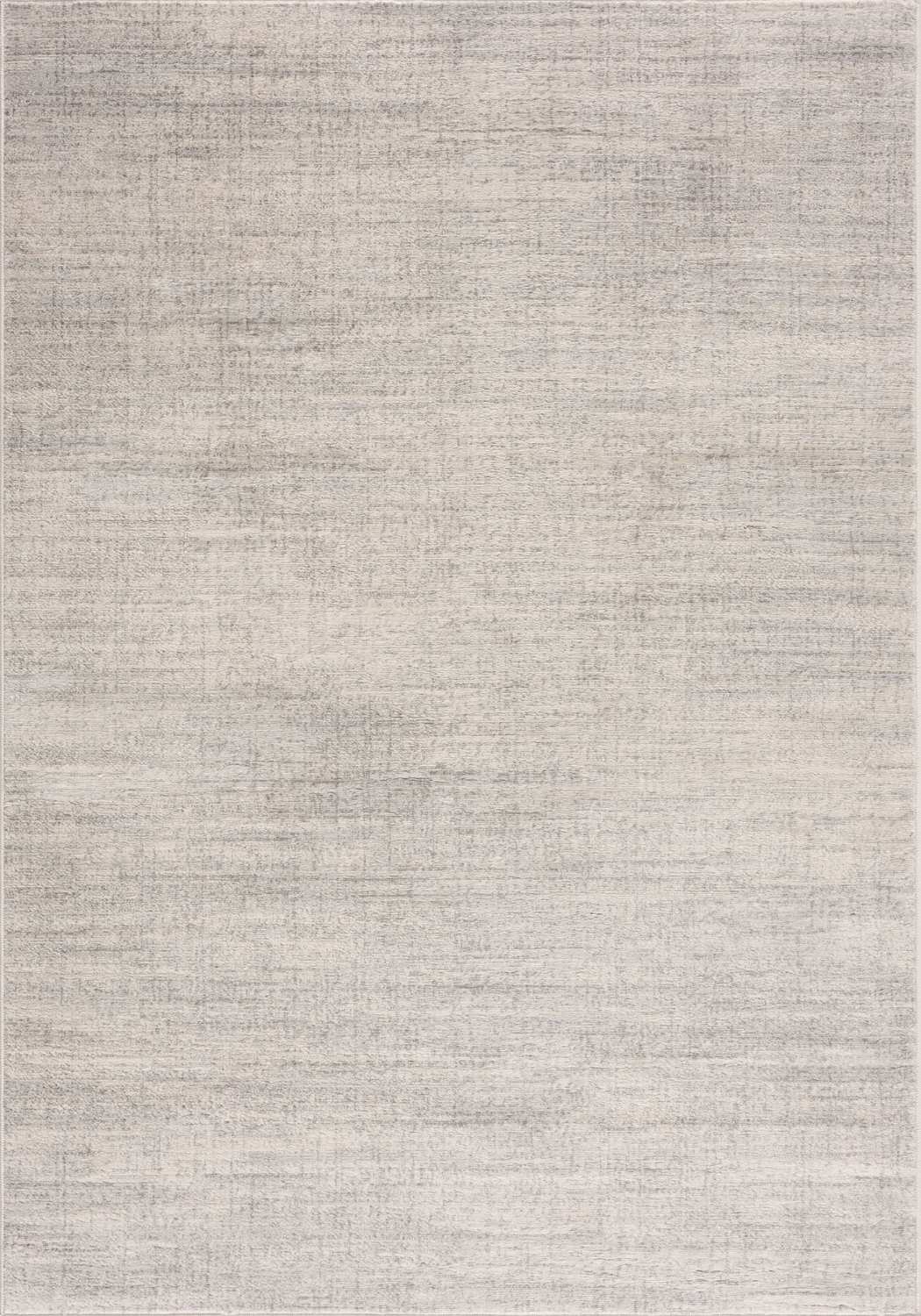
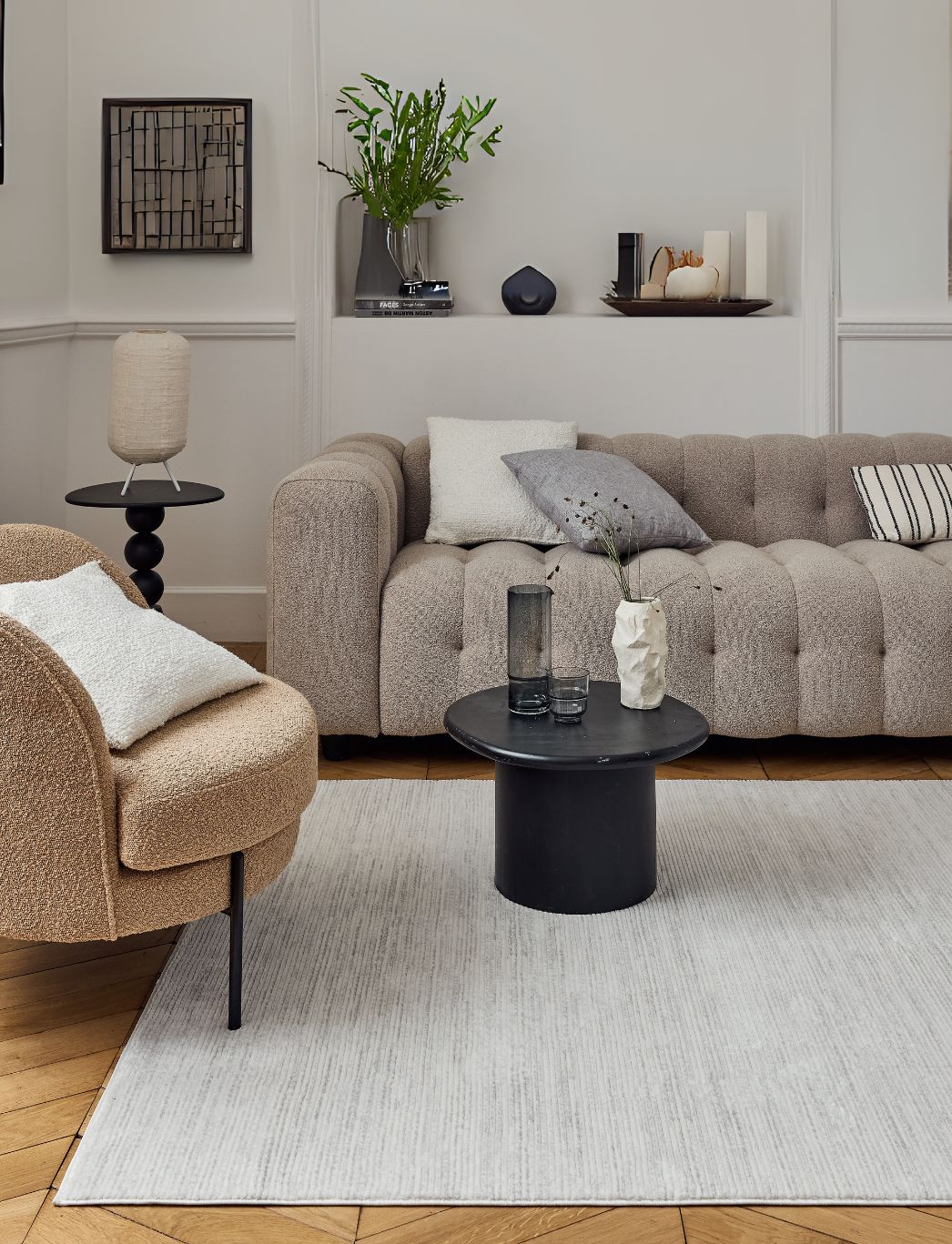
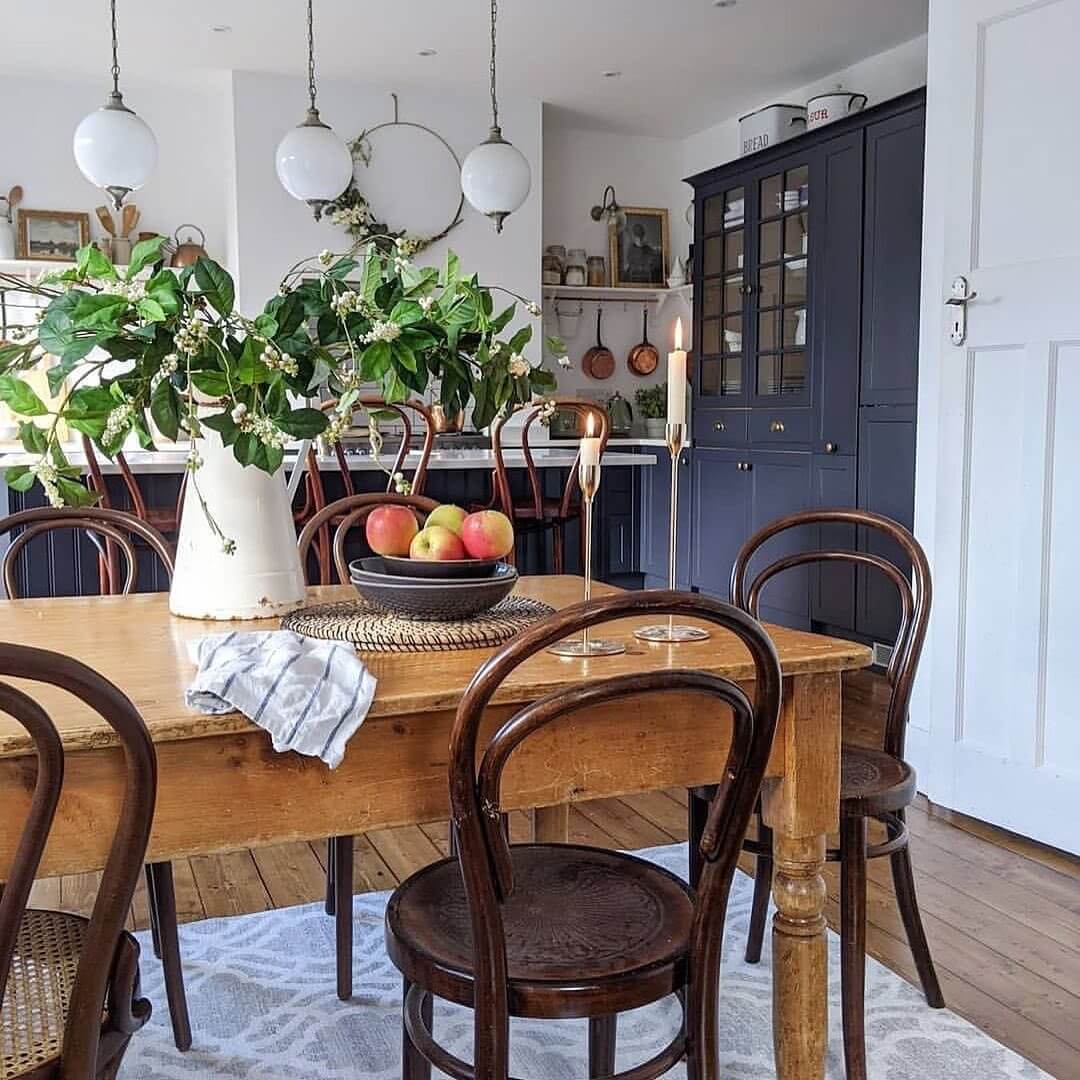
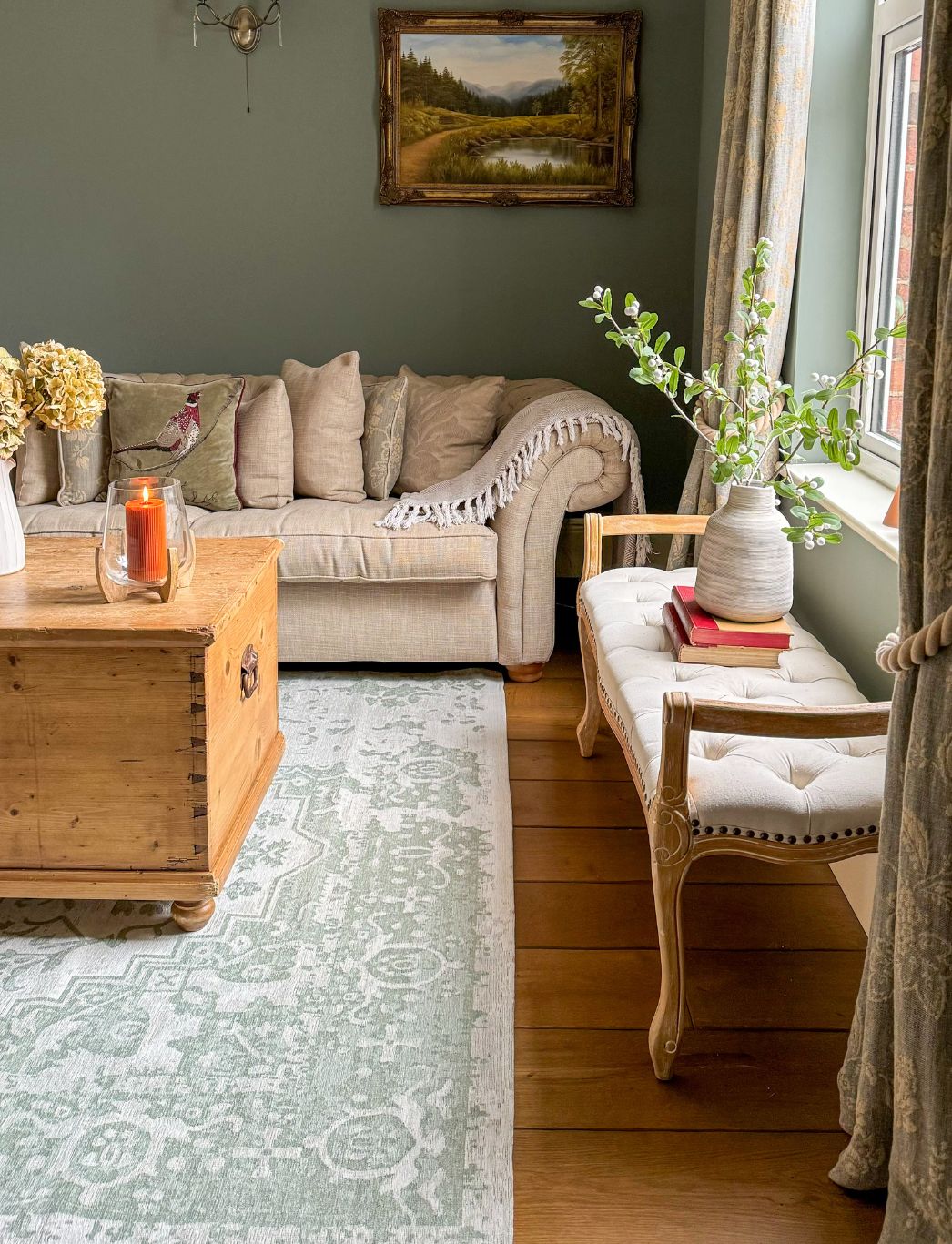
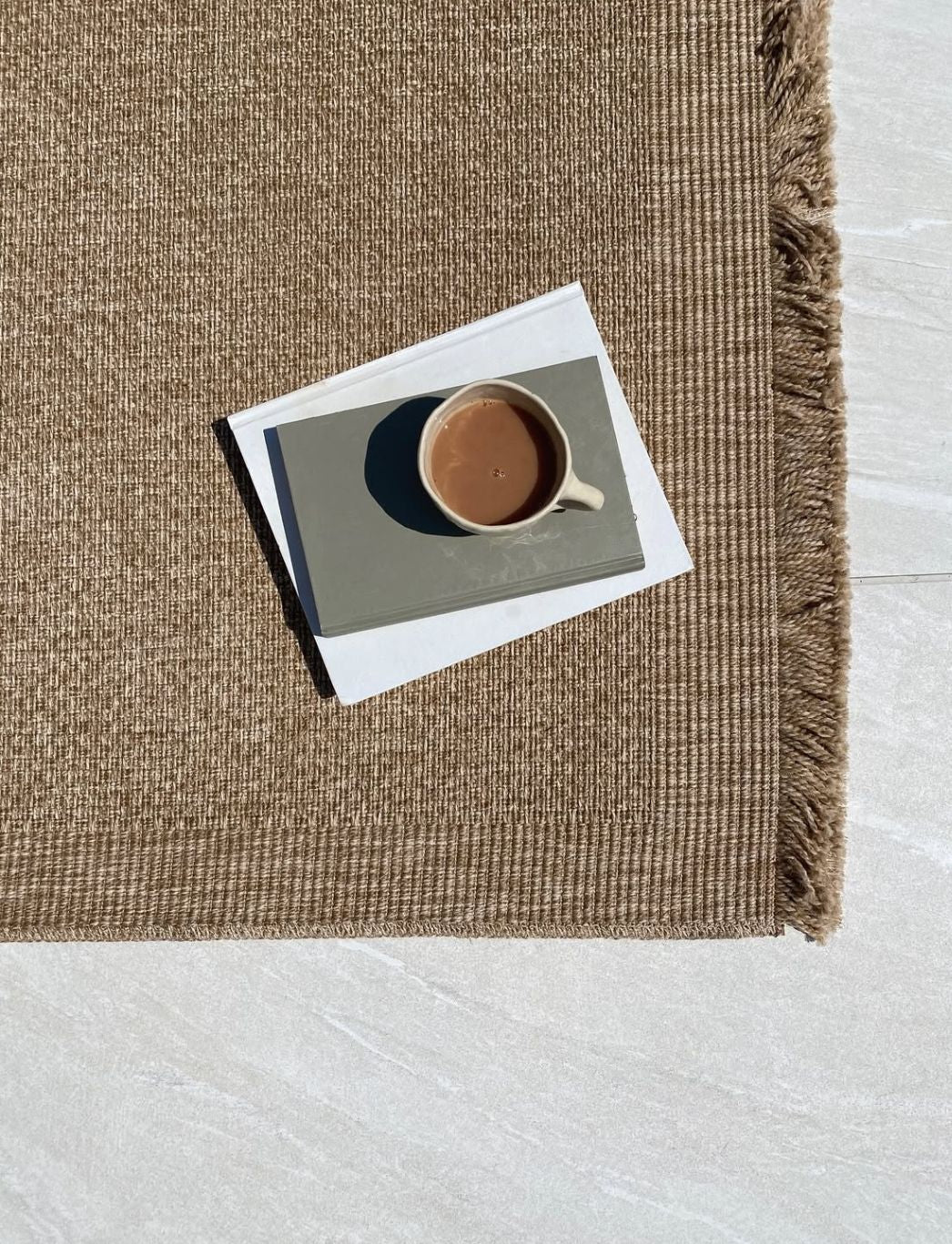
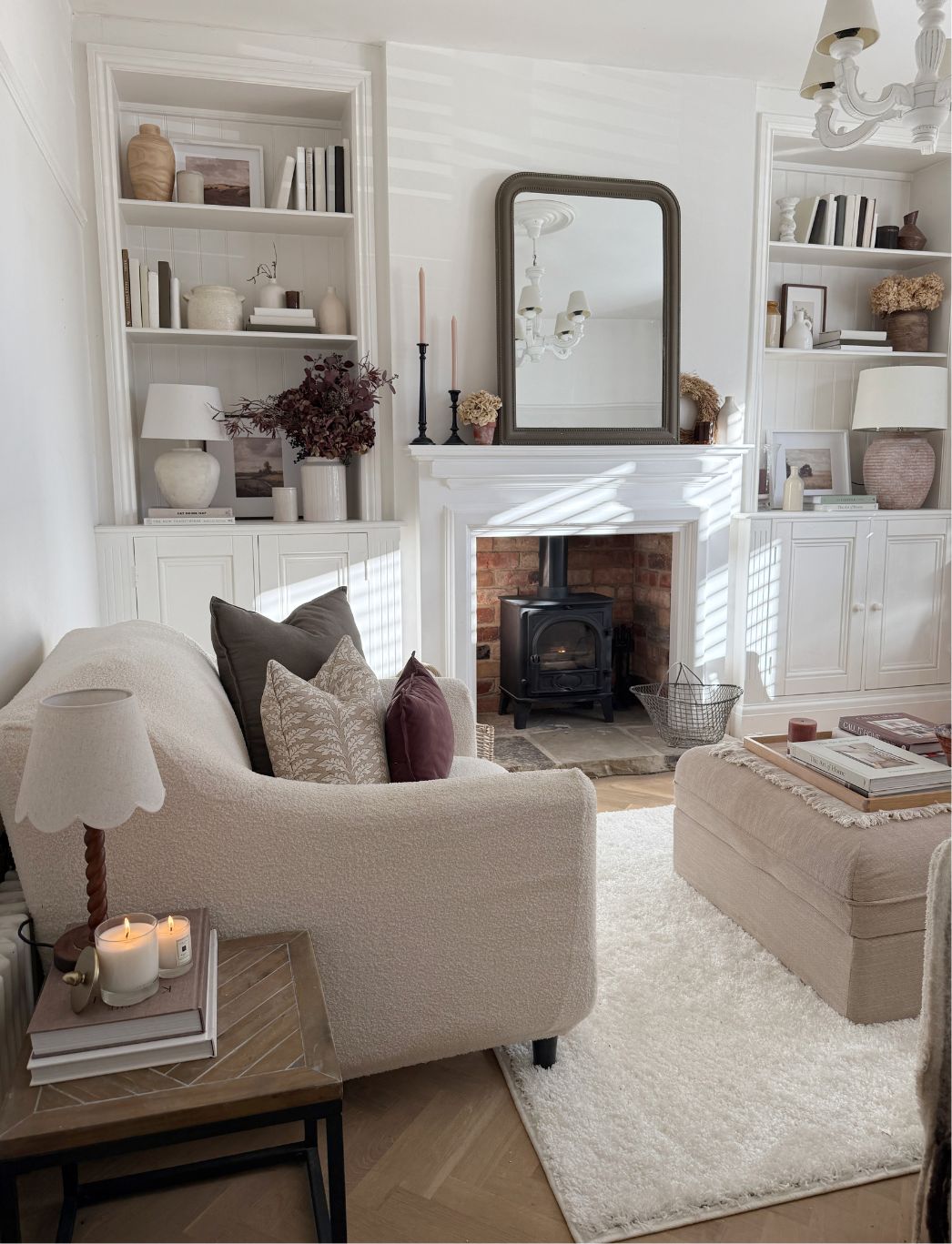
Leave a comment